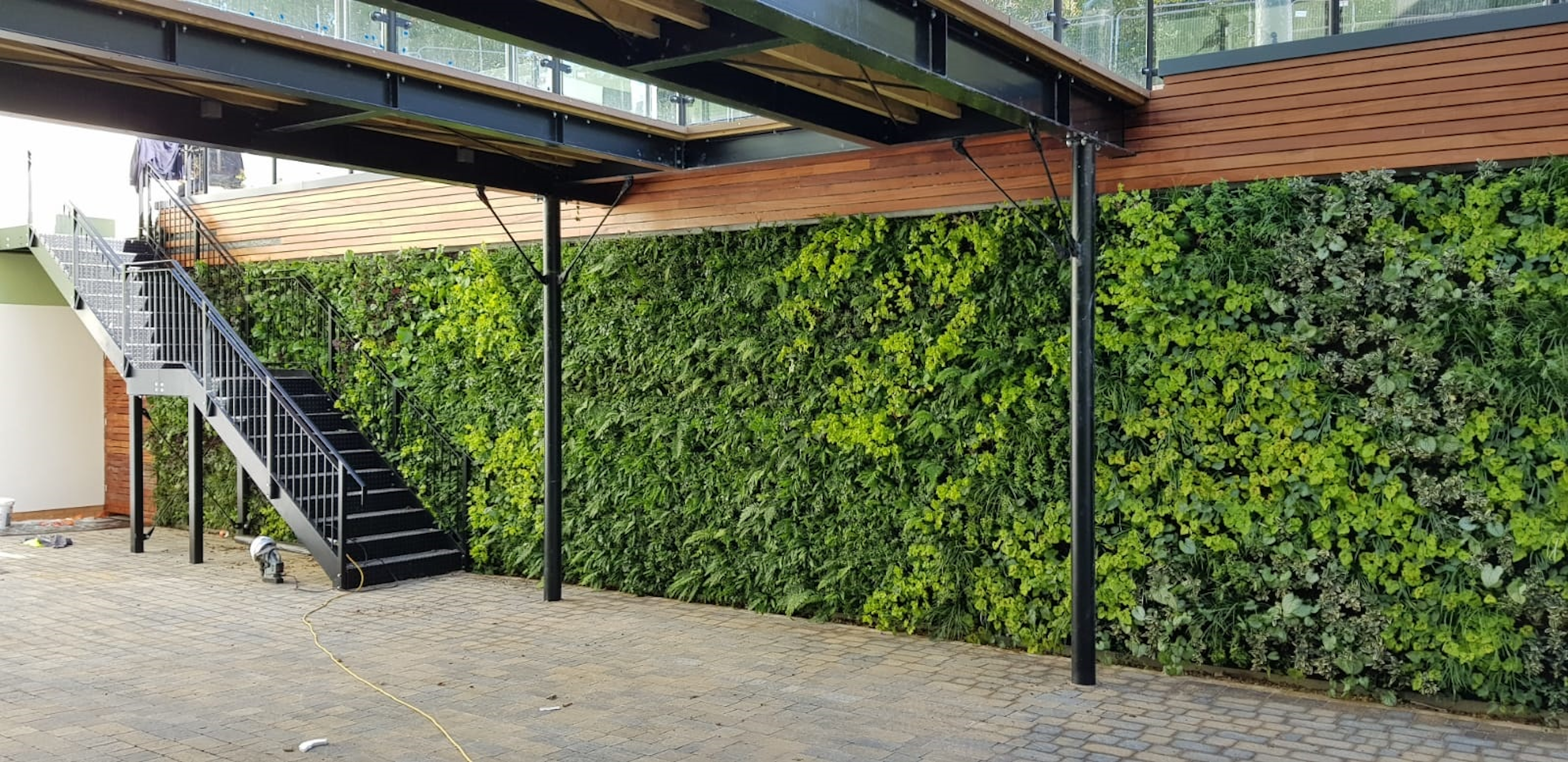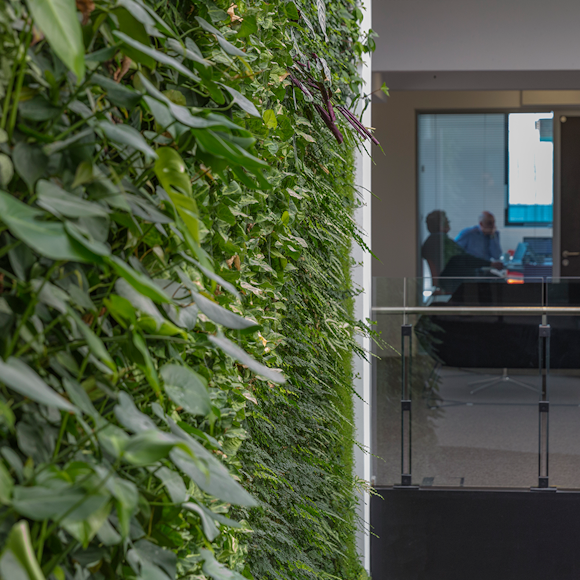Biophilic design principles have pervaded our man-made surroundings since human architecture began. For thousands of years, people have looked for ways to incorporate the natural habitat into the design of homes, work spaces, and public places. In 1984, the term “biophilia” was popularised by biologist Edward Wilson, though it was first used twenty years earlier. Wilson describes biophilia as “the urge to affiliate with other forms of life”. So how does this urge factor in to architectural design? We’re going to look at biophilic design principles, biophilic interior and exterior design, and the effect biophilic design can have on people who live and work in places that utilise it.
Biophilic design principles
When Viritopia say “We provide a biophilic solution to today’s environmental challenges”, what exactly do we mean? Biophilic design uses elements of nature to provide respite and joy to people in man-made spaces. For most of history, humans have spent their time outside- the relatively recent change to indoor living is something that our bodies might not have fully adapted to yet. Biophilic design allows us to interact with nature without compromising our modern lifestyle, and studies over the past few decades have shown the restorative and enhancing effects it can have.
Biophilic design principles are generally organised into three categories: nature in the space, nature of the space, and natural analogues. Nature in the space refers to the direct presence of nature and often includes multi-sensory interactions. These interactions can be thermal, visual, haptic, olfactory, or anything else where the natural presence is clear and direct. Nature of the space is about mimicking or being inspired by spatial configurations in nature. This is about replicating the feelings that natural spaces give us, such as senses of refuge, mystery, prospect, or peril. Natural analogues use indirect methods to reflect nature, such as the use of naturally-inspired patterns and shapes with non-natural materials or materials that have been extensively altered. These principles can be used individually or together to create a connection with nature in a non-natural space; the key to biophilic design principles is to integrate these forms in a way that feels natural.
Biophilic interior design
For many people, biophilic design is seen as something that happens in the architecture and external elements of a building, with biophilic interior design being little more than strategically-placed potted plants. This image, however, is far from reality.
Plant-based installations such as living canvases and living walls are now available inside as well as outside, providing design opportunities that can transform even the dullest interior. A key aspect of biophilic design is making it regularly accessible to the people in the space, and users of a building spend much more time interacting with the interior than the exterior. Another important aspect is using smaller elements to create an overall setting, rather than focusing on small, individual areas. Living walls and canvases are excellent features for this kind of design because their large surface area makes them a strong feature in any room, while their interactions with features such as windows and nearby furniture ties them in to the overall habitat.
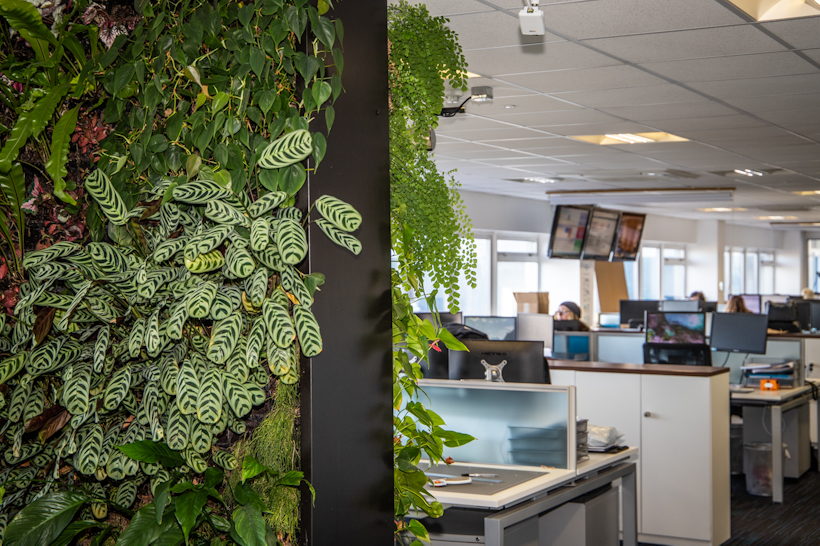
Biophilic exteriors
When it comes to creating a biophilic exterior to a building, there are two approaches- new construction or revamping an existing building.
When it comes to refurbishing an older space using biophilic design principles, elements like living walls and green roofs are ideal because they incorporate so many biophilic elements in a single installation. For example, a green roof is an excellent way to create a restorative space in a small area such as courtyard or roof, providing the building’s inhabitants with a place where they can take a physical and mental break from whatever stresses they may be facing.
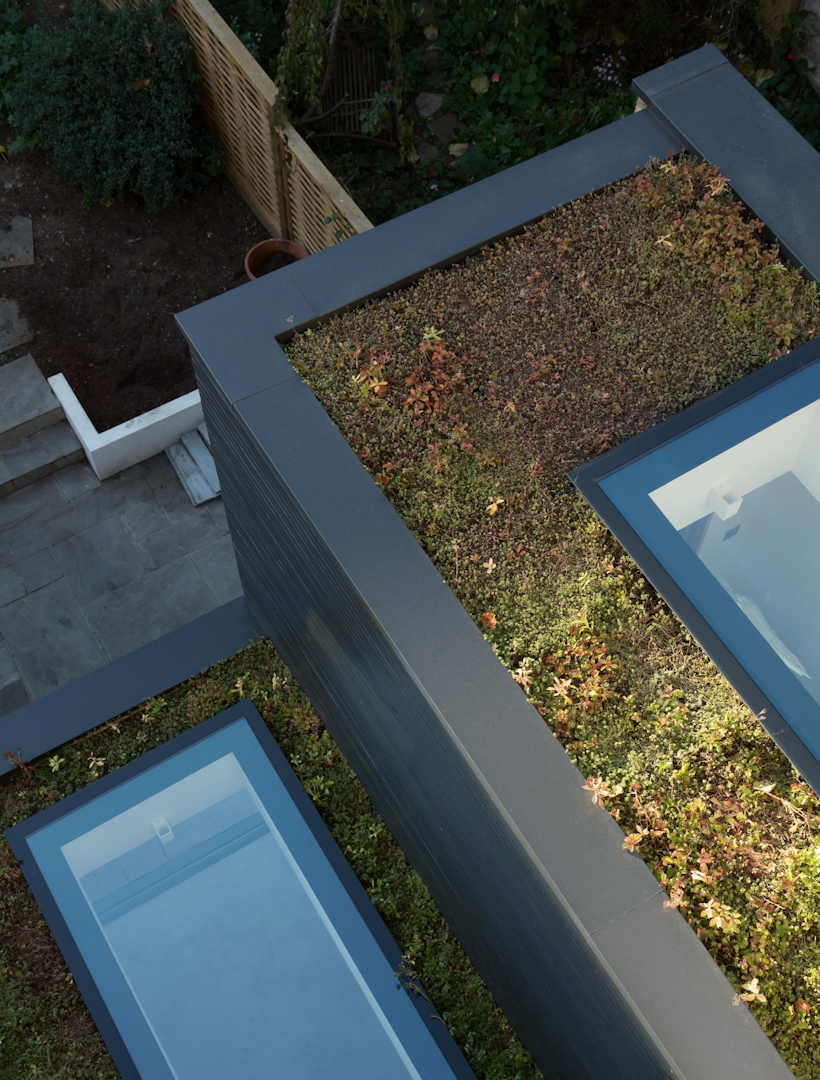
Living Walls and Green Roofs
While living walls and green roofs can also be used in new buildings, an architect with biophilic design principles in mind has a lot of opportunity to explore the three design categories and how they can be merged to create a beautiful and beneficial space. You can see this kind of thinking in many modern buildings, such as workplaces that use glass to increase the amount of natural light, and hospitals that have large atriums to give a sense of free space to incredibly busy areas.
Although often recognised as solely an addition to an existing façade or as part of a refurbishment of an existing building, a living wall should also be realised as an alternative façade. If this is allowed for earlier in the design stage, there may be cost savings in contrast to adding a living wall later on. This is because you can use a living wall instead of the normal cladding material, fixing it back to the main structure and creating a stunning vertical garden that’s embedded into the elevation.
Living wall consultancy from the experts
From forming a detailed analysis on how a scheme is to meet regulation, to aiding a faster planning process, we provide you with the tools to take a project to the next level by capitalising on the environmental assets. See how Viritopia can work to support your project today.
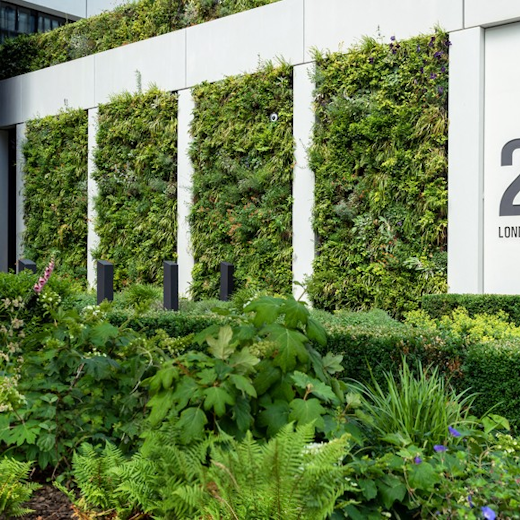
Biophilic design in the workplace
While it looks beautiful, biophilic design offers many benefits other than aesthetic. Biophilic design in the workplace has shown to increase creativity and reduce absenteeism, with studies recording an 8% increase in productivity and a 13% increase in employee well-being. Biophilic design has also shown to improve patient recovery times in hospitals, reduce crime rates in residential areas, and increase learning ability and test results in schools. These amazing results stem from the improved user experience of the building. Many public spaces were built with function as their top priority and comfort as an afterthought, meaning that elements such as natural light, airflow, and atmosphere were not given much attention.
The World Health Organisation estimates that stress-related illnesses such as mental health issues and cardio-vascular disease will be the two biggest contributors to ill health by 2020. The introduction of biophilic design to buildings provides its users with ways to reduce and release their stress, creating a healthier environment that people are happier to be in. Biophilic design also often features “vernacular architecture”, where a building is constructed to connect to and reflect the landscape surrounding it. Vernacular architecture and the use of local elements in biophilic interior design can help users connect to their local communities and form bonds with the natural world around them.
Biophilic design has progressed enormously in the past few decades, with research being conducted to explore its reaches and benefits showing spectacular results. As the biophilic design principles are being pushed with new architectural and interior design ideas, our public and private spaces are helping us to connect to humankind’s natural environment. Incorporating nature in the space, nature of the space, and natural analogues is making us calmer, more concentrated, and more content with where we’re spending our time. This is a journey we’ve been making since we first started building spaces for ourselves, and it will undoubtedly be a factor in our architecture and design for years to come.
